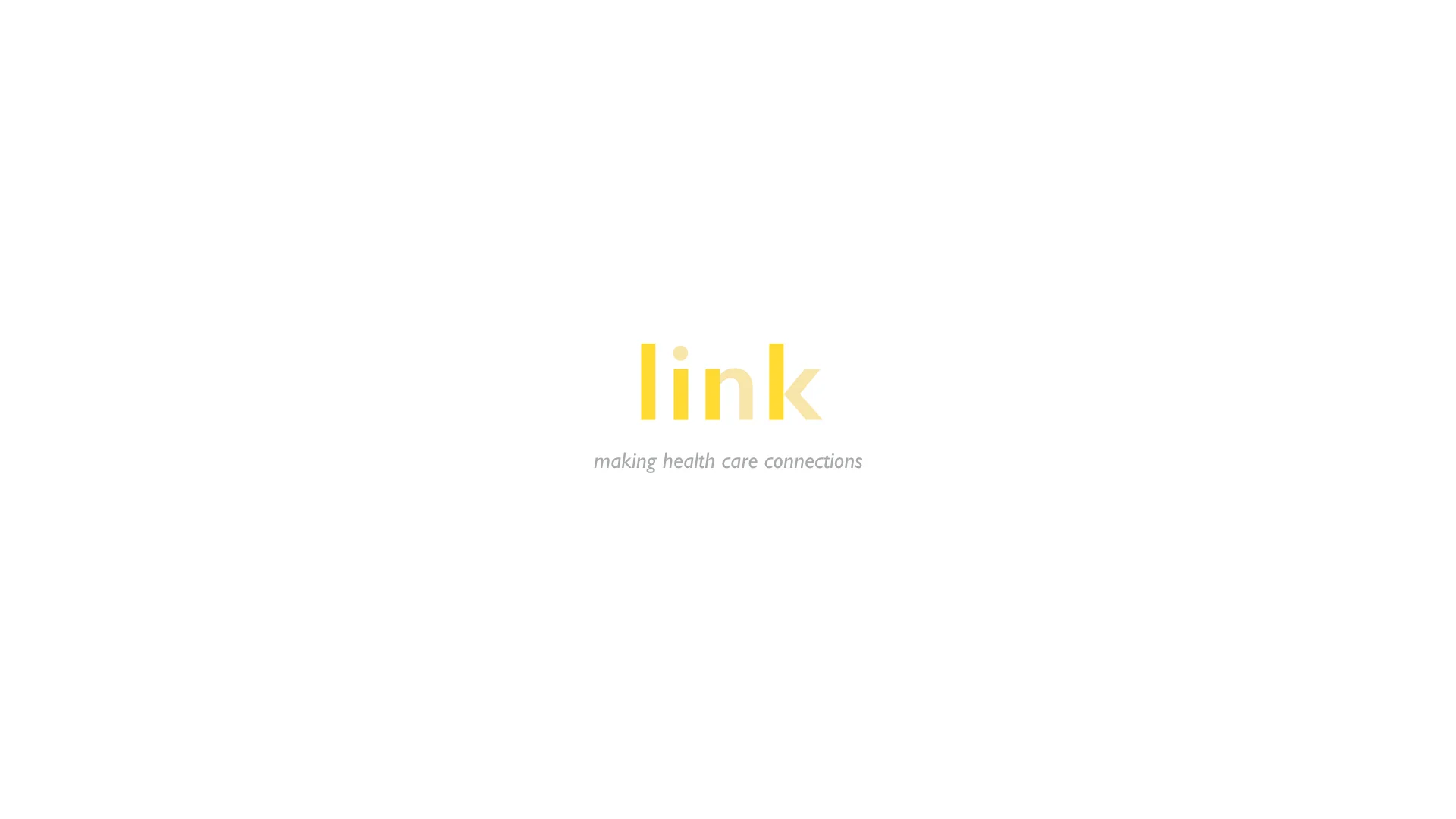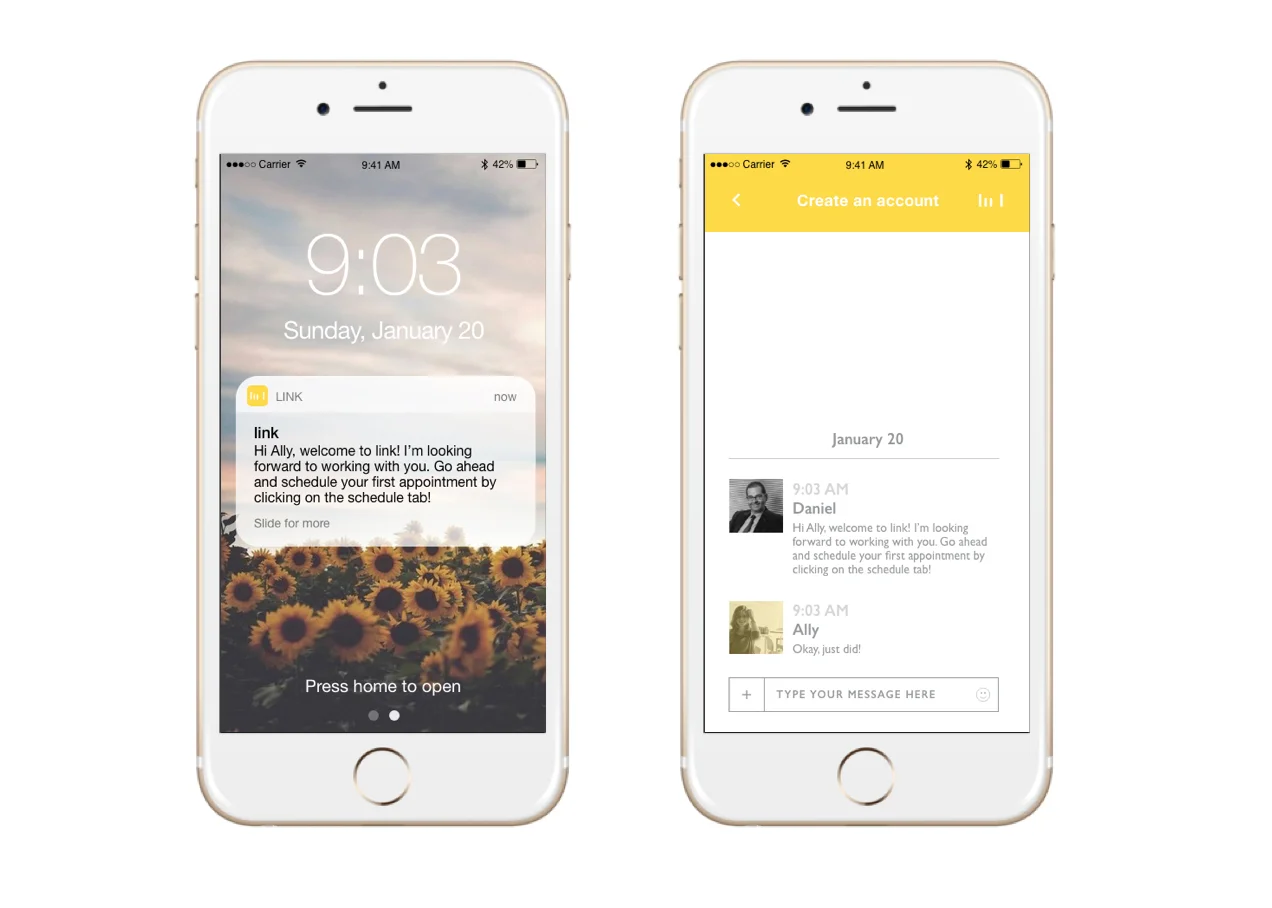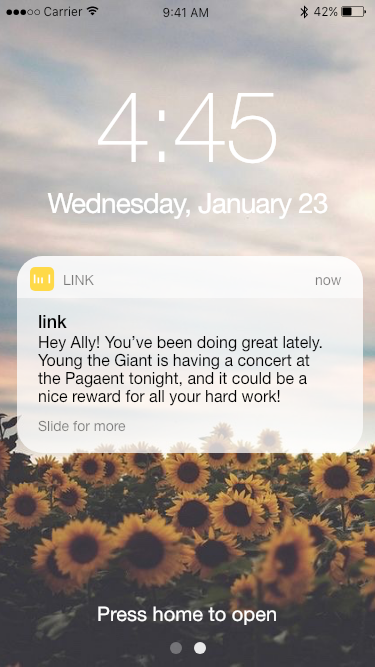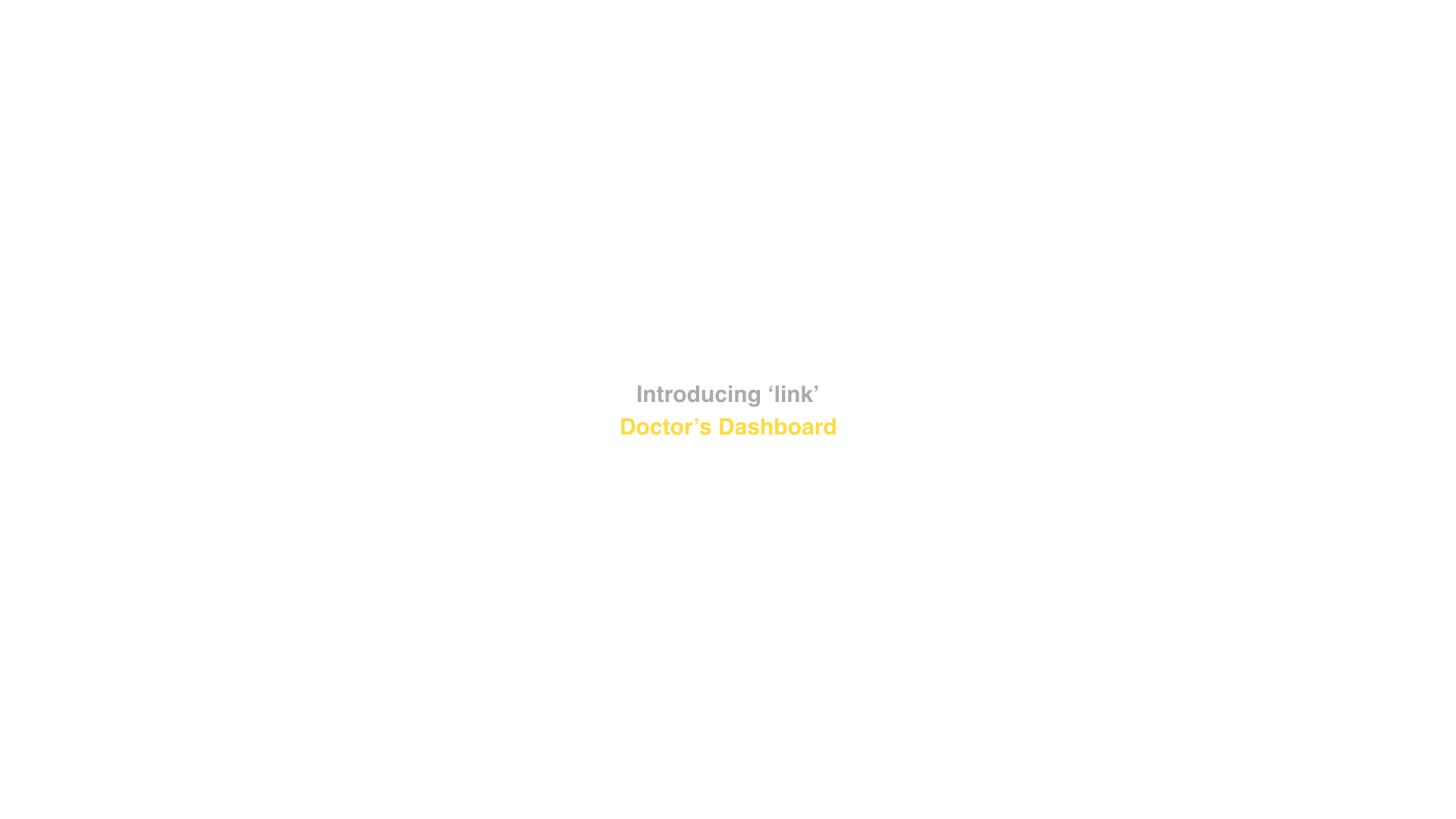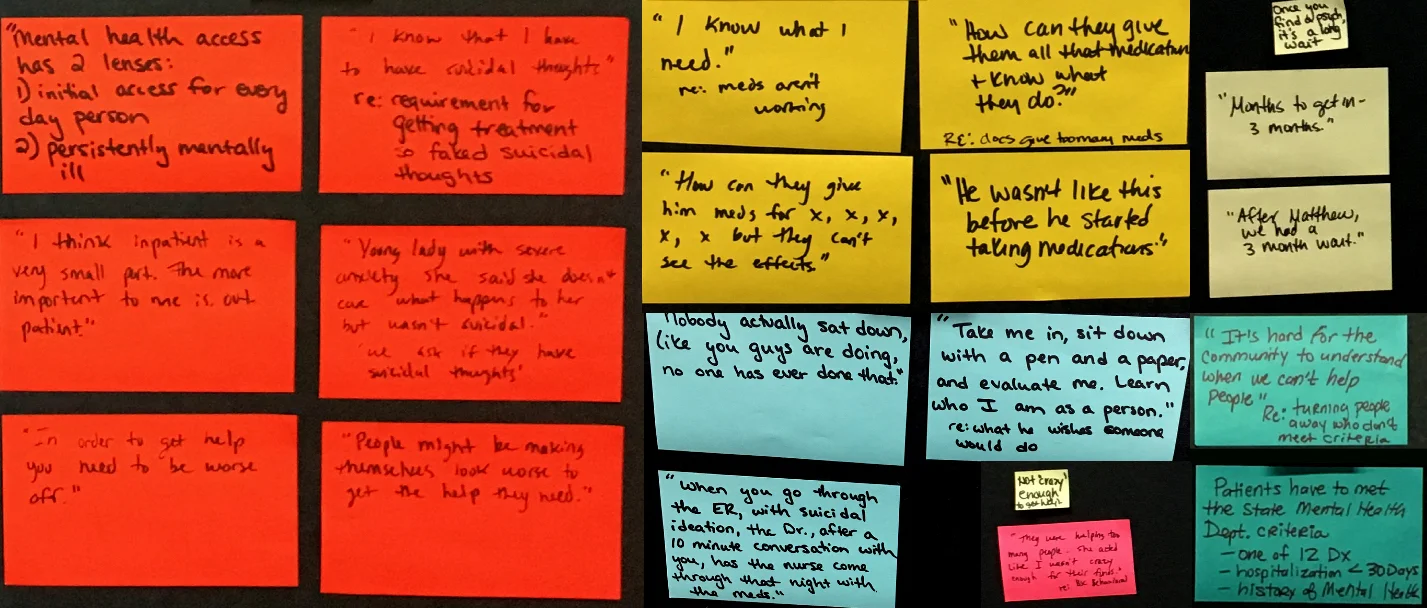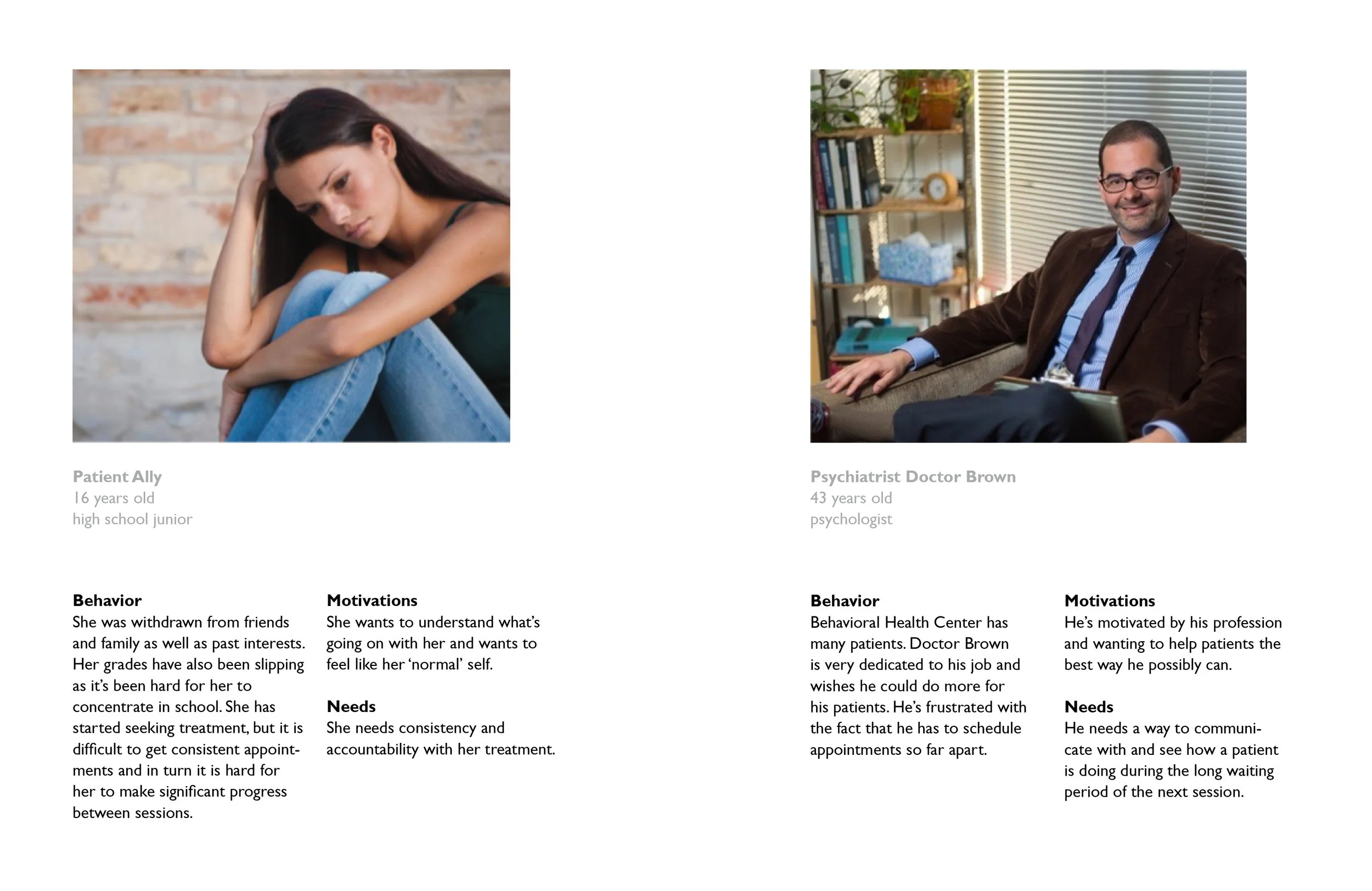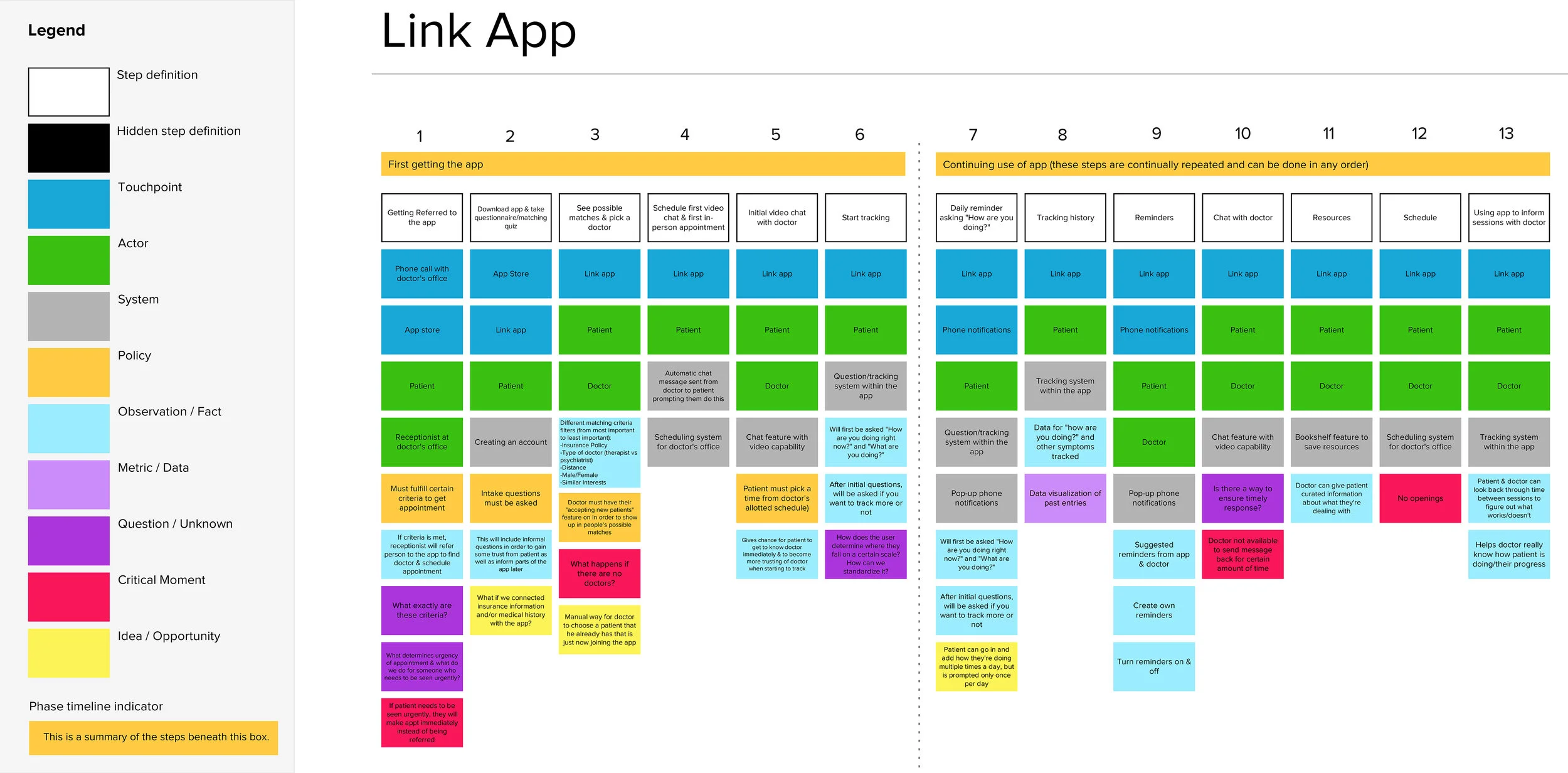LINK App
Service Design Project
Project Overview
For this project, our class partnered with BJC HealthCare's Center for Clinical Excellence, who were already looking at the topic of mental health in rural communities. We were able to gain access to research they had previously completed, including insights from interviews with people from a rural Missouri town. We were presented with the question: "How might we help people living in rural areas understand their diagnosis and then navigate resources in their communities?" I completed this project alongside Cliodhna Dill, who took the lead on design while I took the lead on research and development. Together, we created an app aimed at younger patients with non-urgent cases who are struggling to get the consistent, straight-forward treatment they need for their mental health problems.
Patients who call a behavioral health center, such as BJC, who do not have urgent mental health cases (thoughts of harm to themselves or others), will be referred to the app in order to find a doctor, set up an appointment, and begin their treatment. The onboarding process begins with taking basic account information. It then goes into asking friendly, light-hearted questions such as “What are your hobbies?” These questions will later inform the artificial intelligence of the app in order to provide individualized notifications during the use of the app. The questionnaire then goes to more technical questions of what the patient is looking for (how far their willing to travel, if they’d prefer female or male, etc). If a patient already has a doctor but is just starting the app, there is a screen where they can input their doctor’s username and connect with them. The final part of the questionnaire is questions pulled from the ICHOM (International Consortium for Health Outcomes Measurement) Baseline Patient Assessment. As a patient may have to wait months before an appointment, this helps remove intake appointments, where they would answer questions like these instead of starting treatment. Our app allows people to begin treatment right away.
Goal: Connect patients and doctors to streamline the health care experience. Track patient's mood, set reminders, make appointments, upload resources and improve the patient-doctor relationship to speed up recovery
After completing the questionnaire, the patient is able to look through available doctors. There are different filters people can turn on and off in order to find just the doctor they’re looking for. Each doctor can be clicked on in order to find more information about them. Their profile will include their professional information as well as get-to-know-you information in order to establish more of a connection between patient and doctor.
After finishing the questionnaire and picking a doctor, the patient will receive an automatic chat message from the doctor they picked. This message will prompt the patient to make their first appointment as well as schedule a brief in-app video call within the week. The video call allows the patient to speak with their doctor in a more timely manner, as opposed to having to wait several months, and it allows them to feel more comfortable with who can see the personal data they are inputting.
Health care of any form can often to be difficult to navigate and seem like a cold and confusing process. Link aims to combat this notion by allowing patients to feel more actively involved and cared for during their treatment. The app features a bright and easy to navigate design that is approachable and friendly. As this app is targeted towards younger patients, the language is meant to be casual and relatable. These design choices help the user feel more comfortable while inputting personal data.
Patients are asked daily through notifications ‘How are you feeling right now?’ They can track how they are feeling and what they are doing. When finished, they can continue on to track various symptoms, such as insomnia, energy level, and concentration. By tracking their mood, activities, and symptoms, patients as well as their doctors can better view their progress and identify possible problem areas. As patients may have long wait times between in-person appointments, the tracker allows patients to more accurately recall changes or patterns in their mood for more comprehensive treatment.
These screens show how the artifical intelligence informs the app. Data inputed in the onboarding questions as well as the moodtracker are used to provide the patient with notifications prompting them to do activities that make them happy.
The app would also have a desktop version available, particularly for doctors who need to access the information on a secure network. Desktop website designed by Cliodhna Dill.
Process
We started our process by looking at the mental health resources currently available in Farmington as well as looking at the notes from interviews conducted by BJC. We wanted to take a look at what was working and what wasn’t. Throughout the interviews, we recognized several trends. The first being that wait times are long, and even if they could schedule an appointment, that appointment would be months away. Second, people were frustrated with the health care system as it was difficult to navigate, and they felt they weren’t really being listened to. Finally, there is a lack in outpatient care, and there are not many options for people who do not have severe cases. These insights led to our initial ideas which included different variations of online platforms that patients could access for resources, connecting with people going through similar experiences, or streamline the appointment-making process.
Key Insights:
"We had a three month wait [after finding a psychiatrist]"
"In order to get help, you need to be worse off"
How might we better connect patients and doctors in-between appointments in order to better facilitate treatment?
We ultimately decided to focus on the relationship between patient and doctor and how we could improve it for those who may have longer wait times. Keeping our new "how might we" question in mind, we developed two personas to focus our further work on based on some of the insights we had access to. These personas allowed us to better focus on what the functions of the app would be and how they would work.
From there, we developed the various features the app would have, creating various journey maps and blueprints. These explorations allowed us to work out the details of various features as well as possible pain points before we actually designed the app.
The service blueprint maps out the main features of the app. The map is divided into the onboarding process and the continual use of the app.
